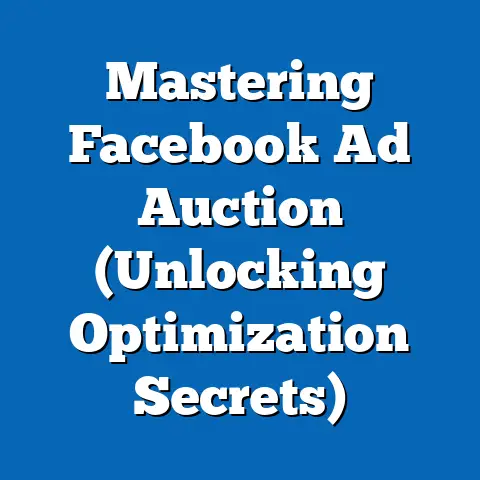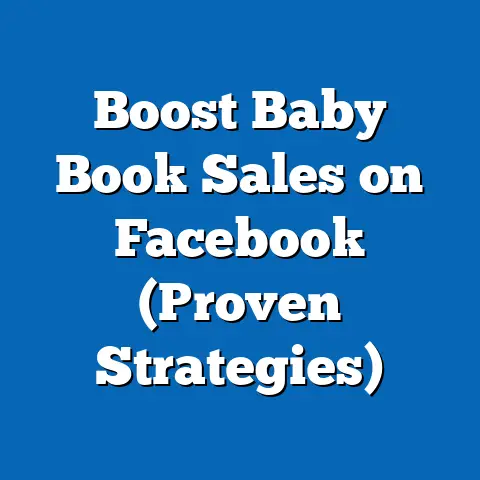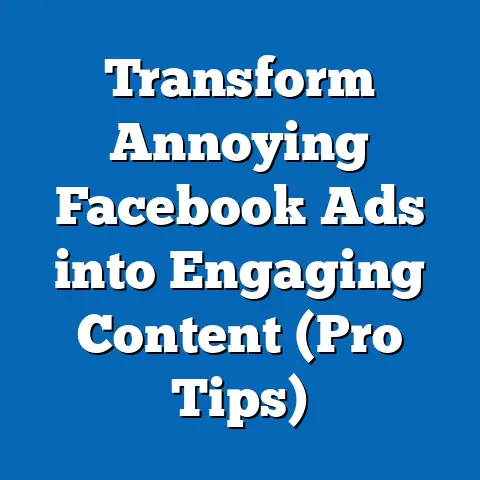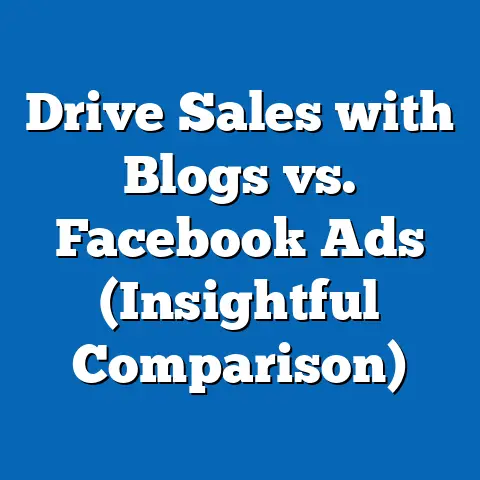Maximize fb ad Impact with Dead Deer Images (Ethical Insights)
Imagine scrolling through your Facebook feed. A seemingly endless stream of vacation photos, political rants, and targeted ads vying for your attention. Suddenly, an image stops you in your tracks. It’s a serene, almost painterly scene: an autumn landscape bathed in the golden light of a setting sun. A lone figure, a hunter, stands beside a fallen deer. The image is powerful, evocative, and undeniably… unsettling. You feel a twinge of sadness, a pang of respect for the animal, and perhaps a faint stirring of the primal understanding of the cycle of life and death. This is the power of imagery, especially when it treads into the realm of the controversial.
But is using an image like a dead deer in a Facebook ad ethical? Does the potential for shock value outweigh the risk of alienating or offending your audience? That’s the question I’m going to explore in this article. We’ll delve into the psychology of imagery, the ethical considerations, real-world examples, and how to craft a compelling message around potentially controversial visuals. Buckle up, because this is a topic that requires careful consideration and a nuanced approach.
1. The Psychology of Imagery in Advertising
Humans are visual creatures. We process images faster and retain them longer than text. That’s why imagery has always been a cornerstone of advertising. But not all images are created equal. A stock photo of smiling people using your product is unlikely to make a lasting impression. To truly cut through the noise, you need imagery that evokes emotion. And sometimes, that means using images that are shocking, thought-provoking, or even disturbing.
Think about the classic anti-smoking campaigns that show graphic images of diseased lungs or the aftermath of a car accident caused by drunk driving. These images aren’t pleasant, but they are undeniably effective. They tap into our primal fears and anxieties, forcing us to confront uncomfortable truths.
In the context of a dead deer, the image can trigger a range of emotions:
- Sadness: A natural response to the loss of life.
- Respect: For the animal and its place in the ecosystem.
- Curiosity: About the context of the image.
- Disgust: In some individuals, particularly those opposed to hunting.
- Intrigue: A desire to understand the story behind the image.
The key is to understand how these emotions can be channeled to achieve your advertising goals. According to a study by Neilsen, ads with strong visual content get 94% more total views than ads without. This means that if you can get the attention of your audience, your message will be seen.
Takeaway: Strong imagery, even controversial imagery, can be a powerful tool for capturing attention and evoking emotion. However, it’s crucial to understand the psychological impact of your visuals and ensure they align with your brand values and advertising objectives.
2. The Ethical Implications of Using Graphic Imagery
This is where things get tricky. Just because you can use a shocking image doesn’t mean you should. The ethical implications of using graphic imagery in advertising are significant and must be carefully considered.
Furthermore, there’s a risk of being perceived as insensitive, exploitative, or even glorifying violence. This can lead to a public backlash, damage to your brand reputation, and even calls for boycotts.
So, how do you navigate these ethical minefields? Here are some key considerations:
- Audience Sensitivity: Who are you trying to reach? What are their values and beliefs? Are they likely to be receptive to this type of imagery, or are they more likely to be offended?
- Context is Key: What is the message you’re trying to convey? Does the image of a dead deer directly relate to your product or service? Is it being used to raise awareness about a relevant issue, such as wildlife conservation?
- Transparency: Be upfront about the nature of your imagery. Don’t try to hide or sugarcoat the fact that it’s potentially disturbing.
- Respect: Treat the subject matter with respect. Avoid using the image in a way that is gratuitous, sensationalistic, or disrespectful to the animal.
- Alternative Options: Are there other, less controversial ways to achieve your advertising goals? Could you use a different image, a different message, or a different approach altogether?
It’s also important to be aware of advertising standards and guidelines. Organizations like the Advertising Standards Authority (ASA) in the UK and the Federal Trade Commission (FTC) in the US have rules about the use of offensive or misleading imagery in advertising.
Personal Experience: I once worked on a campaign for a hunting apparel company that wanted to use images of hunters with their kills. While the images were tastefully done, we ultimately decided against using them in our Facebook ads due to concerns about audience sensitivity and potential backlash. Instead, we focused on images of hunters in the wilderness, showcasing the beauty of nature and the thrill of the hunt without explicitly depicting the act of killing. This allowed us to reach our target audience without alienating those who were opposed to hunting.
Takeaway: Using graphic imagery in advertising is a high-risk, high-reward strategy. While it can be incredibly effective, it’s crucial to carefully weigh the ethical implications and ensure you’re not causing harm or damaging your brand reputation. Always prioritize audience sensitivity, transparency, and respect.
3. Case Studies and Real-World Examples
Let’s take a look at some real-world examples of brands that have used graphic imagery in their advertising campaigns, and see what we can learn from their successes and failures.
- PETA (People for the Ethical Treatment of Animals): PETA is known for its provocative and often shocking advertising campaigns. They frequently use graphic images of animal cruelty to raise awareness about issues like factory farming and fur production. While their campaigns are often controversial, they are undeniably effective at generating attention and sparking debate.
- WWF (World Wildlife Fund): WWF has used powerful imagery of endangered animals and environmental destruction to highlight the threats facing our planet. Their campaigns often feature images of starving polar bears, deforested rainforests, and polluted oceans. These images are designed to evoke empathy and inspire action.
- Dove’s “Real Beauty” Campaign: While not explicitly graphic, Dove’s “Real Beauty” campaign challenged traditional beauty standards by featuring images of women of all shapes, sizes, and ethnicities. This was a bold move at the time, and it sparked a global conversation about body image and self-esteem.
Analysis:
- PETA: Their success lies in their unwavering commitment to their cause and their willingness to push boundaries. However, their tactics have also been criticized for being overly sensationalistic and alienating potential supporters.
- WWF: Their campaigns are generally well-received because they focus on raising awareness about important environmental issues. The images they use are often disturbing, but they are also undeniably impactful.
- Dove: Their “Real Beauty” campaign was a huge success because it resonated with women who felt excluded by traditional beauty advertising. By celebrating diversity and promoting self-acceptance, they were able to build a strong brand identity and connect with their target audience on a deeper level.
Takeaway: These case studies demonstrate that graphic imagery can be a powerful tool for raising awareness, sparking debate, and building brand identity. However, it’s crucial to have a clear understanding of your target audience, your brand values, and the message you’re trying to convey.
4. Crafting a Compelling Message Around Controversial Imagery
Okay, so you’ve decided that using an image of a dead deer in your Facebook ad is the right move for your brand. Now what? The key is to craft a compelling message that provides context, explains your intentions, and resonates with your target audience.
Here are some potential angles you could take:
- Conservation: Highlight the role of hunting in wildlife management and conservation efforts. Explain how hunting can help control populations, prevent overgrazing, and protect endangered species.
- Responsible Hunting: Promote ethical hunting practices, such as fair chase, sustainable harvesting, and respect for the animal.
- Food Source: Position the deer as a source of sustainable, organic meat. Emphasize the connection between humans and nature, and the importance of respecting the animals that provide us with sustenance.
- Respect for Nature: Use the image to evoke a sense of awe and wonder at the beauty and power of the natural world.
Here are some examples of taglines or copy that could complement the imagery:
- “From Field to Table: Honoring the Cycle of Life.”
- “Sustainable Hunting: Protecting Our Wildlife for Future Generations.”
- “Respecting the Hunt, Respecting the Land.”
- “The Hunter’s Code: Conservation, Ethics, and Responsibility.”
- “Wild Game: A Sustainable Source of Organic Protein.”
Pro Tip: Consider using a “Learn More” call to action to direct viewers to a landing page where they can learn more about your brand’s values and your approach to hunting or conservation.
Personal Experience: When crafting ad copy around potentially sensitive topics, I always recommend running A/B tests with different messaging approaches. This allows you to see which messages resonate best with your target audience and minimize the risk of causing offense.
Takeaway: The message you craft around your controversial imagery is just as important as the image itself. Be clear about your intentions, provide context, and resonate with your target audience’s values and beliefs.
5. Future Trends in Advertising with Graphic Imagery
The advertising landscape is constantly evolving. Consumers are becoming more sophisticated, more discerning, and more vocal about the types of content they want to see. So, what does the future hold for advertising with graphic imagery?
Here are some emerging trends to watch:
- Authenticity: Consumers are increasingly drawn to brands that are authentic and transparent. This means being honest about your values, your practices, and your intentions.
- Purpose-Driven Marketing: Brands are increasingly using their advertising to promote social and environmental causes. This can be a powerful way to connect with consumers on a deeper level, but it’s important to ensure your actions align with your words.
- Personalization: As data privacy concerns grow, brands are increasingly relying on first-party data to personalize their advertising experiences. This allows them to target their messages to specific individuals based on their interests, behaviors, and preferences.
- Ethical AI: Artificial intelligence is playing an increasingly important role in advertising. However, it’s crucial to ensure that AI is used ethically and responsibly. This means avoiding bias, protecting privacy, and being transparent about how AI is being used.
Speculation:
I believe that the future of advertising with graphic imagery will be characterized by a greater emphasis on ethical considerations, authenticity, and purpose-driven marketing. Brands that are willing to take risks and challenge conventions will continue to stand out, but they must do so in a way that is respectful, responsible, and aligned with their values.
Takeaway: The future of advertising with graphic imagery is uncertain, but one thing is clear: brands must be willing to adapt to changing consumer expectations and ethical standards.
Conclusion
Using powerful imagery in advertising is a dual-edged sword. It can be incredibly effective for capturing attention, evoking emotion, and driving action. However, it also carries significant ethical risks.
Ultimately, the decision of whether or not to use an image like a dead deer in your Facebook ad depends on your brand values, your target audience, and your advertising objectives. If you choose to proceed, be sure to carefully weigh the ethical implications, craft a compelling message, and be prepared for both positive and negative reactions.
Remember, the most effective advertising is not just about grabbing attention, it’s about building trust, fostering relationships, and making a positive impact on the world. The challenge lies in finding that delicate balance between capturing attention and maintaining ethical integrity. It’s a challenge worth embracing, as the rewards of responsible and impactful advertising are immeasurable.






